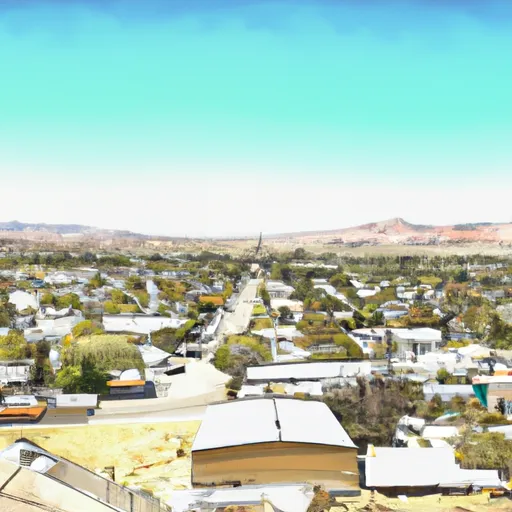-
 Snoflo Premium
Snoflo Premium
Get unlimited access to all our content
With no Ad interruptions! - Start Your Free Trial Login with existing account
Ludlow
Eden Index
Climate
8.1
•
Recreation
4.0
•
Community
•
Safeguard
4.6/10

Ludlow, California is a small unincorporated community located in the Mojave Desert, within San Bernardino County. The climate in Ludlow is classified as a hot desert climate, characterized by long, hot summers and mild winters. Summers can reach scorching temperatures, often exceeding 100°F (37°C), while winters are mild with temperatures ranging from 50°F (10°C) during the day to 30°F (-1°C) at night.
Hydrologically, Ludlow is located near the Mojave River, which flows north of the community. The river contributes to the hydrology of the region, although Ludlow itself does not have any major water bodies within its boundaries.
Outdoor recreation opportunities in Ludlow are abundant due to its desert location. The vast desert landscape offers various activities such as off-roading, hiking, and camping. Nearby attractions include the Mojave National Preserve, where visitors can explore sand dunes, volcanic cinder cones, and Joshua tree forests. Ludlow is also close to the historic Route 66, providing opportunities for road trips and exploring the nostalgic remnants along the famous highway.
In summary, Ludlow, California experiences a hot desert climate, is close to the Mojave River, and offers a range of outdoor recreation opportunities in its desert surroundings.
What is the Eden Index?
The Snoflo Eden Index serves as a comprehensive rating system for regions, evaluating their desirability through a holistic assessment of climate health, outdoor recreation opportunities, and natural disaster risk, acknowledging the profound impact of these factors on livability and well-being.
Climate Health Indicator (CHI): 8.1
Ludlow receives approximately
102mm of rain per year,
with humidity levels near 73%
and air temperatures averaging around
21°C.
Ludlow has a plant hardyness factor of
9, meaning
plants and agriculture in this region tend to thrive here all year round.
By considering the ideal temperature range, reliable water supplies, clean air, and stable seasonal rain or snowpacks, the Climate Health Indicator (CHI) underscores the significance of a healthy climate as the foundation for quality living.
A healthy climate is paramount for ensuring a high quality of life and livability in a region, fostering both physical well-being and environmental harmony. This can be characterized by ideal temperatures, reliable access to water supplies, clean air, and consistent seasonal rain or snowpacks.
Weather Forecast
Streamflow Conditions
Northern Mojave
Area Rivers
Northern Mojave
Snowpack Depths
Northern Mojave
Reservoir Storage Capacity
Northern Mojave
Groundwater Levels
Recreational Opportunity Index (ROI): 4.0
The Recreational Opportunity Index (ROI) recognizes the value of outdoor recreational options, such as parks, hiking trails, camping sites, and fishing spots, while acknowledging that climate plays a pivotal role in ensuring the comfort and consistency of these experiences.
Access to outdoor recreational opportunities, encompassing activities such as parks, hiking, camping, and fishing, is crucial for overall well-being, and the climate plays a pivotal role in enabling and enhancing these experiences, ensuring that individuals can engage in nature-based activities comfortably and consistently.
Camping Areas
| Campground | Campsites | Reservations | Toilets | Showers | Elevation |
|---|---|---|---|---|---|
| Afton Canyon | 22 | 1,409 ft |
Catastrophe Safeguard Index (CSI):
The Catastrophe Safeguard Index (CSI) recognizes that natural disaster risk, encompassing floods, fires, hurricanes, and tornadoes, can drastically affect safety and the overall appeal of an area.
The level of natural disaster risk in a region significantly affects safety and the overall livability, with climate change amplifying these risks by potentially increasing the frequency and intensity of events like floods, fires, hurricanes, and tornadoes, thereby posing substantial challenges to community resilience and well-being.
Community Resilience Indicator (CRI):
The Community Resilience Indicator (CRI) recognizes that education, healthcare, and socioeconomics are crucial to the well-being of a region. The CRI acknowledges the profound impact of these elements on residents' overall quality of life. By evaluating educational resources, healthcare accessibility, and economic inclusivity, the index captures the essential aspects that contribute to a thriving community, fostering resident satisfaction, equity, and social cohesion.

